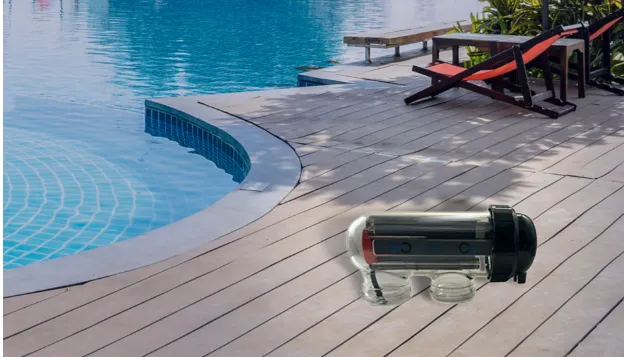A pool is a great way to relax, exercise, and spend time with loved ones. But keeping the water clean and safe requires regular care. For pools that use saltwater systems, the salt chlorinator cell is one of the most important parts. It works quietly in the background, turning salt into chlorine so the water stays clear and healthy.
Like all equipment, the salt cell does not last forever. Over time, it begins to wear out and loses its ability to produce enough chlorine. If not replaced in time, the pool water can become unsafe and more difficult to manage. Knowing when to consider a pool salt cell replacement can save you time, money, and effort while keeping your pool enjoyable all year round.
Also read: Writing a Letter of Wishes in Australia: A Guide to Protecting Your Legacy
Understanding the Role of a Pool Salt Cell
The pool salt cell is the heart of a saltwater pool system. It uses a process called electrolysis to break down salt and create chlorine. This steady supply of chlorine keeps the water free from bacteria, algae, and other harmful contaminants.
Without a working salt cell, the pool cannot sanitise itself properly. This means cloudy water, stronger odours, and potential health risks. That’s why keeping the salt cell in good condition is essential for smooth pool care.
Average Lifespan of a Salt Cell
Salt cells are built to last, but they do not run forever. On average, a salt cell will last around 3 to 7 years, depending on how often the pool is used and how well the system is maintained.
Several factors affect how long a salt cell lasts:
- Water balance: Poorly balanced water with incorrect pH or salt levels can wear out the cell faster.
- Usage: Pools used often will place more demand on the salt cell.
- Cleaning habits: A cell that is cleaned regularly lasts longer than one that is neglected.
Knowing the average lifespan gives you a rough idea of when to start watching for signs of wear.
Signs That a Pool Salt Cell Needs Replacement:
A salt cell does not usually stop working suddenly. Instead, it gives clear signals that it is wearing out. Here are some common signs to look for:
Reduced Chlorine Production
The most obvious sign is low chlorine levels, even when the system is running as usual. If you need to add chlorine manually more often, the salt cell may not be working properly.
Frequent Algae Growth
If algae begins to appear in the pool despite regular cleaning, it could mean the cell is no longer producing enough chlorine to keep the water balanced.
Warning Lights or Error Codes
Most modern systems come with control panels that show error messages or indicator lights. These alerts often signal when the cell is failing or needs attention.
Visible Wear and Tear
Inspect the salt cell for signs of damage, scaling, or corrosion. Heavy buildup of calcium or worn plates often means the cell is near the end of its life.
Shorter Cleaning Intervals
If you notice that the cell requires cleaning more often than before, it may be struggling to operate efficiently.
Maintenance Tips to Extend Salt Cell Life
While chlorinator cell replacement is eventually necessary, proper care can extend the life of your salt cell. Here are a few easy steps:
- Regular cleaning: Rinse the cell with fresh water to remove calcium deposits. Avoid using strong chemicals unless needed.
- Check water balance: Keep pH, salt, and stabiliser levels within the recommended range.
- Run the system as directed: Avoid overworking the cell by keeping the pump and filter in good condition.
- Seasonal care: If the pool is not used year-round, store the cell properly during the off-season.
Good maintenance habits not only extend the life of the cell but also keep your pool water cleaner and safer.
When is the Right Time for Replacement?
Even with the best care, all salt cells need replacement. The key is knowing when. If you notice frequent water problems, rising maintenance costs, or constant error messages, replacing the salt cell is likely the best solution.
Delaying chlorinator cell replacement may save money in the short term, but it can lead to larger issues such as cloudy water, algae outbreaks, and expensive chemical treatments.
Benefits of Timely Pool Salt Cell Replacement
Replacing the salt cell at the right time offers several advantages:
- Consistently clean water: A new cell restores chlorine production to proper levels.
- Reduced chemical use: Less need for manual chlorine additions.
- Lower maintenance costs: Prevents water problems that require costly fixes.
- Peace of mind: You can relax knowing your pool is safe and ready to use.
Why Right Professionals for Installation?
While some pool owners may feel comfortable replacing a salt cell themselves, many prefer to work with professionals. Pool builders in Albury can guide you on whether a replacement chlorinator cell is necessary, install the new cell correctly, and ensure that the rest of the system is running smoothly. This not only saves time but also ensures that your investment lasts as long as possible.
Conclusion
A salt cell is a vital part of keeping your pool safe, clean, and enjoyable. Like any piece of equipment, it wears out over time and needs replacement. By understanding its role, knowing the signs of failure, and practising good maintenance, you can plan for replacement at the right time.
Replacing the pool salt cell when needed helps avoid water problems, reduces costs, and ensures your pool is always ready for use. With proper care and timely action, you can enjoy your pool with confidence and peace of mind.



